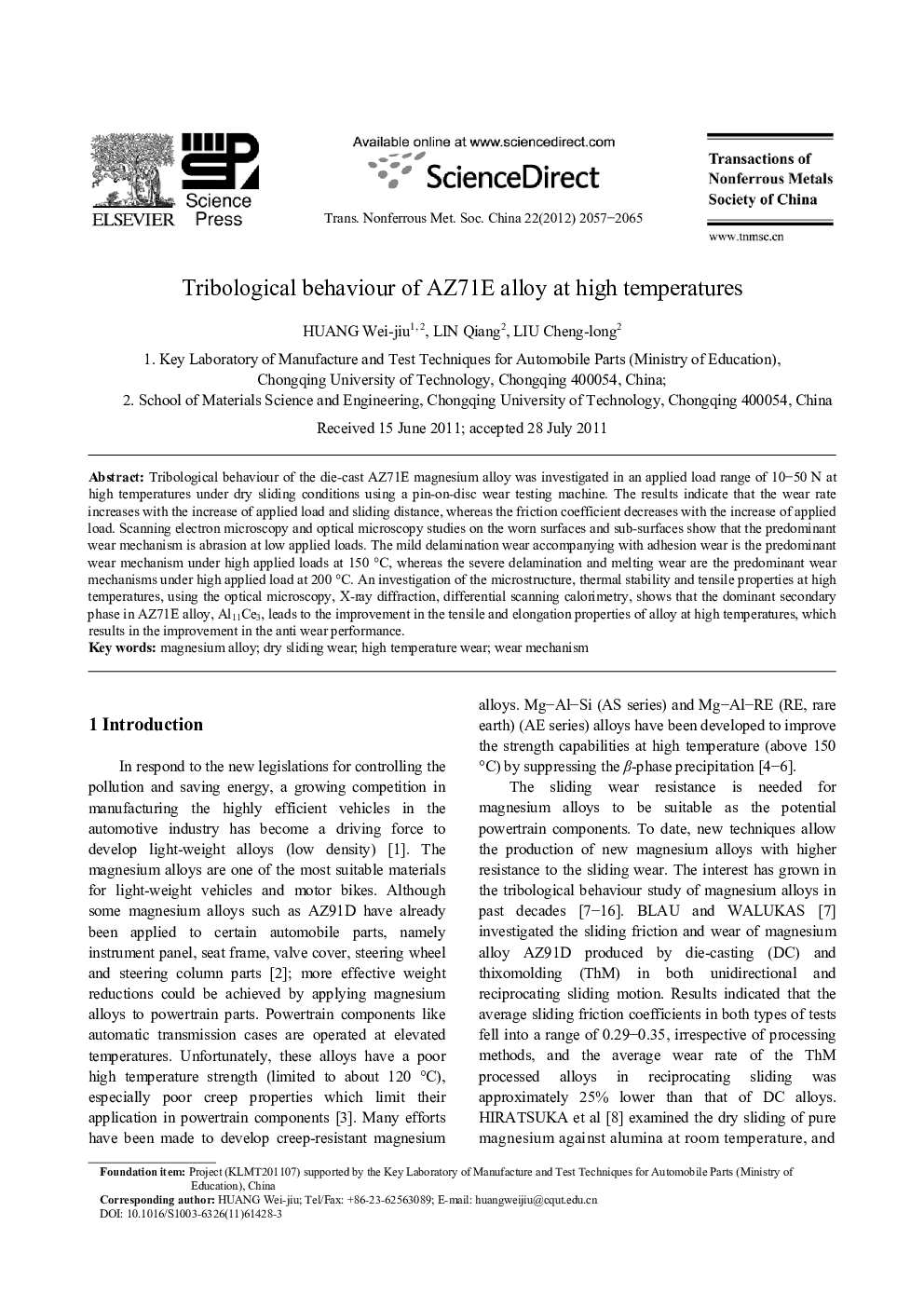| Article ID | Journal | Published Year | Pages | File Type |
|---|---|---|---|---|
| 1637413 | Transactions of Nonferrous Metals Society of China | 2012 | 9 Pages |
Abstract
Tribological behaviour of the die-cast AZ71E magnesium alloy was investigated in an applied load range of 10-50 N at high temperatures under dry sliding conditions using a pin-on-disc wear testing machine. The results indicate that the wear rate increases with the increase of applied load and sliding distance, whereas the friction coefficient decreases with the increase of applied load. Scanning electron microscopy and optical microscopy studies on the worn surfaces and sub-surfaces show that the predominant wear mechanism is abrasion at low applied loads. The mild delamination wear accompanying with adhesion wear is the predominant wear mechanism under high applied loads at 150°C, whereas the severe delamination and melting wear are the predominant wear mechanisms under high applied load at 200°C. An investigation of the microstructure, thermal stability and tensile properties at high temperatures, using the optical microscopy, X-ray diffraction, differential scanning calorimetry, shows that the dominant secondary phase in AZ71E alloy, Al11Ce3, leads to the improvement in the tensile and elongation properties of alloy at high temperatures, which results in the improvement in the anti wear performance.
Related Topics
Physical Sciences and Engineering
Materials Science
Metals and Alloys
Authors
Wei-jiu HUANG, Qiang LIN, Cheng-long LIU,
